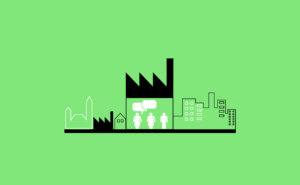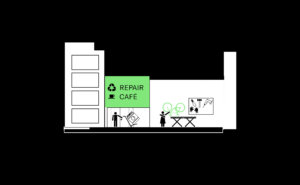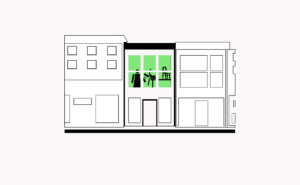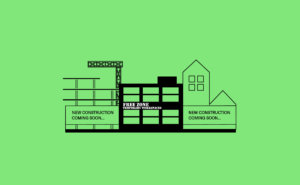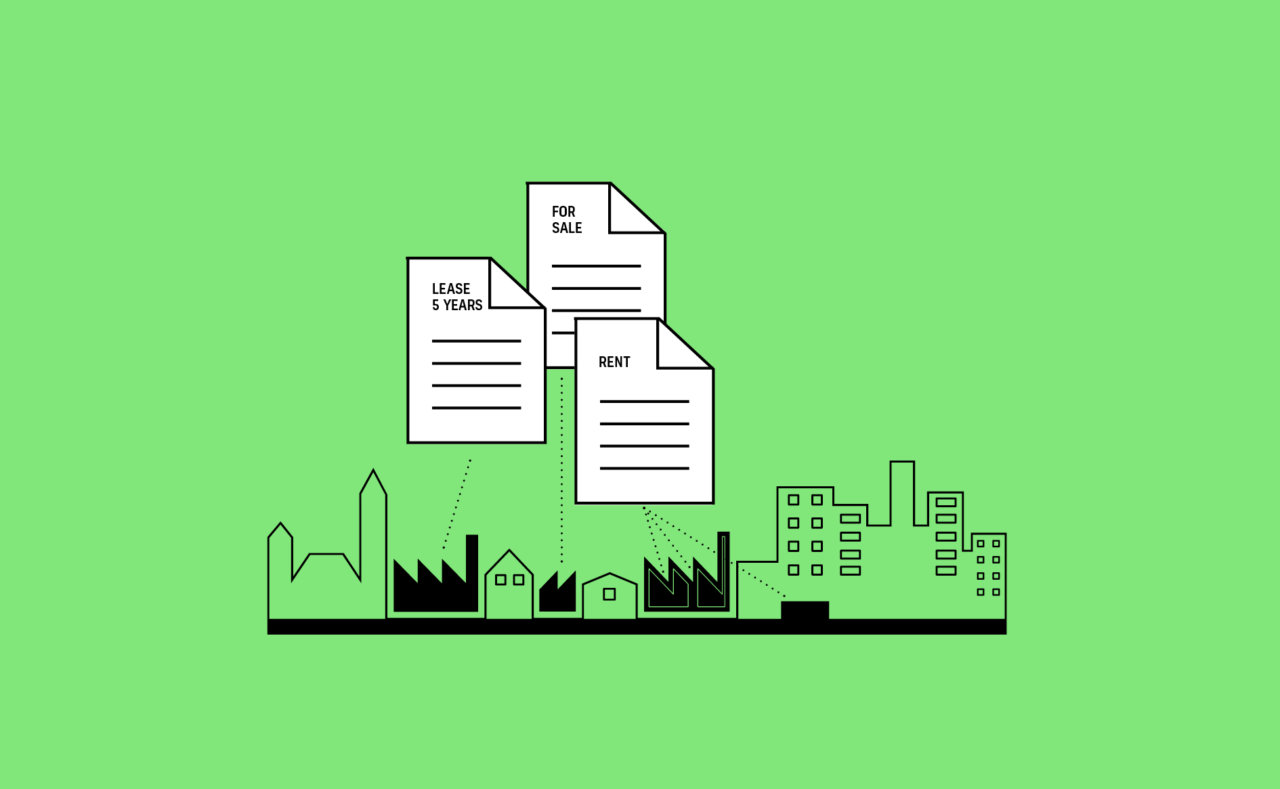
C.4 Diverse Tenure Models
A range of land and property tenure models allows for manufacturing space to be accessible to businesses according to their financial means and ownership needs.
[Context] There are three main forms of property tenure models (in Europe): ownership, leasehold title (such as a 99-year lease) or rental (both short and long-term). Neighbourhoods that have a variety of different tenure models allow businesses to access space based on their needs and capacity. For example, young and/or risk-taking organisations are more inclined to rent in order to invest their capital in the development of their businesses while minimising unnecessary long-term commitments. Established business are more inclined to own their property in order to increase stability while having a long-term investment (such as for collateral against bankruptcy or to finance a pension). NGO’s, cooperatives and community oriented businesses may be inclined to accept a leasehold title as a happy medium between renting and outright ownership. This provides a guarantee in order to make strategic investments (necessary for loans) while also being a more affordable asset.
[Problem] The real estate market does not naturally provide a suitable balance of tenure models as its primary focus is on the most profitable model. Conversely manufacturers in cities with high real estate pressures will accept the type of space and tenure conditions that are available at the point in time they are looking for real estate. Without regulation or compensation mechanisms (balancing measures), tenure models can have a big impact on the types of manufacturing available.
[Forces] In cities with high real estate costs (such as London) the only sites on offer for manufacturers is rental space, since purchasing land is simply unimaginably expensive. For businesses that need to make long-term investments in both technology and personnel, R.9 Assured Security of Space is critical to gain access to bank loans and to ensure their investments can be paid off without having to move or interrupt their production process. For businesses located in dense and expensive cities that suffer from some serious incident, like a fire, finding a suitable alternative site can bankrupt the business unless a similar kind of space is quickly available (C.3 Balance Between Public & Private Land).
[Solution] Ensure areas for manufacturing contain a suitable mix of tenure models to offer space for a diverse range of business types in according to the phases of their development. Where necessary, use public acquisition of manufacturing spaces to balance the real estate market. The R.3 Curator can help look for suitable space while supporting businesses to use their sites more effectively. A C.3 Balance Between Public & Private Land also means that prices can be regulated support crucial forms of manufacturing that the city depends on. Tenure models are often linked to plot sizes. Smaller spaces are typically rented while larger sites are owned). Therefore offering C.5 Varying Unit Sizes can help support diversity by supporting business of various sizes and financial means to find their place. Ensuring there is some unoccupied space can be important to allow businesses to move easily based on their needs rather than the limitations of the market. Assuring the market has a vacancy rate (around 5% from small to large spaces) can provide options and space to grow. While this may seem counter-intuitive, a buffer allows for emergencies (such as fire) and retaining free space means efforts can be made to acquire more space if demand increases. In practice, developing new space could take a decade to realise so planning must be progressive and proactive. By retaining a small buffer, real estate rental rates can be managed. Finally, P.4 Meanwhile Spaces and Transitional Uses are also useful for very young or risk-taking businesses who want to minimise their real estate costs.
[Contribution] Add contributions here.
